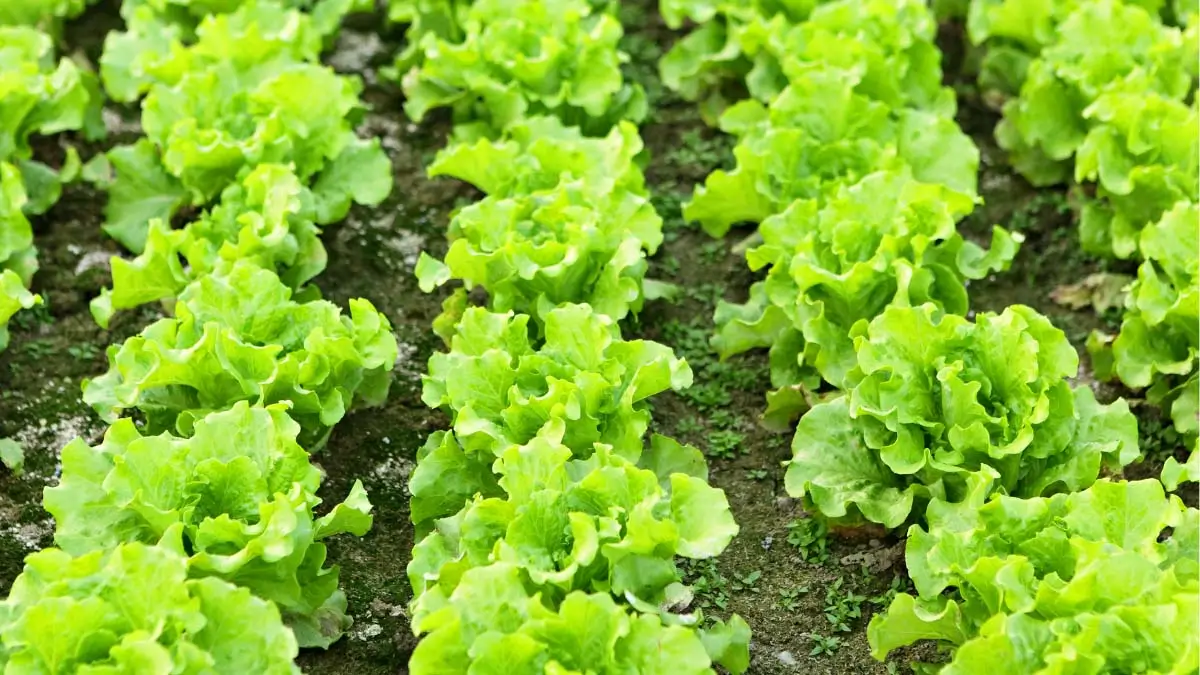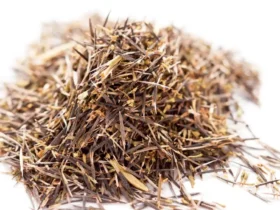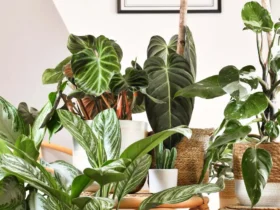Black Seeded Simpson Lettuce is a popular variety known for its delicate leaves and mild flavor, making it a favorite choice for salads. Easy to grow and versatile in the kitchen, this lettuce variety is a great option for gardeners of all skill levels.
With its vibrant green color and tender texture, Black Seeded Simpson Lettuce is a nutritious addition to any meal. Whether used in sandwiches, wraps, or as a base for a fresh salad, this versatile lettuce variety adds a crisp and refreshing element to dishes.
To its delicious taste, Black Seeded Simpson Lettuce is also packed with essential vitamins and minerals, making it a healthy choice for any diet.
Choosing The Right Variety
Black Seeded Simpson Lettuce offers a flavorful addition to your garden, but selecting the right variety is crucial for a successful harvest. Let’s explore the key factors to consider when choosing the perfect Black Seeded Simpson Lettuce variety.
Consider Soil Conditions
- Well-draining soil is ideal for Black Seeded Simpson Lettuce.
- Loamy soil with good organic matter content is beneficial for growth.
- pH level should be around 6.0 to 7.0 for optimal cultivation.
Evaluate Climate Suitability
- Cool-season crop, Black Seeded Simpson thrives in moderate temperatures.
- Ideal temperature range is between 60-70 degrees Fahrenheit.
- Avoid extreme heat, as it can cause the lettuce to bolt prematurely.
When selecting the right Black Seeded Simpson Lettuce variety, ensure your soil meets the requirements and the climate is suitable for optimal growth and yield.

Preparation And Planting
Black Seeded Simpson Lettuce requires careful preparation and planting. To grow this variety successfully, ensure the soil is well-drained, provide ample sunlight, and sow the seeds at the recommended depth. Regular watering and proper thinning will promote healthy growth.
Introduction Growing your own Black Seeded Simpson Lettuce can be a rewarding experience. Proper preparation and planting are essential for a successful harvest. Let’s explore the key steps you need to follow for effective preparation and planting of this nutritious leafy green. Selecting the Proper Location
– Choose a sunny area with good drainage for planting Black Seeded Simpson Lettuce.
– Ensure the location receives at least 6 hours of sunlight daily.
– Avoid planting in areas prone to waterlogging to prevent root rot. Preparing the Soil
– Loosen the soil to a depth of at least 6 inches using a garden fork or tiller.
– Mix in compost or aged manure to improve fertility and soil structure.
– Ensure the soil pH level is between 6.0 and 7.0 for optimal growth. Sowing the Seeds
– Plant the seeds at a depth of 1/4 inch in rows spaced 12 inches apart.
– Water the soil lightly after sowing to moisten the seeds.
– Keep the soil consistently moist but not waterlogged during the germination period.
By following these steps for preparation and planting, you can set the foundation for a successful Black Seeded Simpson Lettuce harvest.
Watering And Irrigation
Proper watering and irrigation are crucial for the healthy growth of Black Seeded Simpson Lettuce. By establishing a consistent watering routine and monitoring moisture levels, you can help ensure that your lettuce stays well-nourished and hydrated. In this section, we will discuss the importance of establishing a watering routine and monitoring moisture levels for optimal growth.
Establishing A Watering Routine
Establishing a watering routine helps maintain a steady moisture level in the soil, which is essential for the overall health of your Black Seeded Simpson Lettuce. Here are some tips to help you establish a watering routine:
- Consistency: Water your lettuce consistently, making sure the soil remains moist but not soggy. Aim to provide about 1 inch of water per week, either through rainfall or irrigation.
- Morning Watering: Water your lettuce in the morning to allow ample time for the leaves to dry before nightfall. This can help prevent the development of fungal diseases.
- Deep Watering: Ensure that the water penetrates deep into the soil, reaching the roots. Shallow watering may lead to shallow root growth, making the lettuce more susceptible to drought and stress.
Monitoring Moisture Levels
Monitoring moisture levels is essential to prevent under or over-watering, both of which can negatively impact your Black Seeded Simpson Lettuce. Here are some tips to help you monitor moisture levels:
- Visual Inspection: Regularly visually inspect the soil to check for dryness or over-saturation. The soil should feel slightly damp to the touch, but not overly wet.
- Finger Test: Insert your finger into the soil up to the first knuckle. If the soil feels dry at that depth, it’s time to water. If it feels moist, hold off on watering as the lettuce still has enough moisture.
- Moisture Meter: Consider using a moisture meter to accurately measure moisture levels in the soil. This can be a handy tool to ensure you provide the right amount of water.
Remember, too much or too little water can lead to stressed and unhappy lettuce. By establishing a watering routine and keeping a close eye on moisture levels, you can help your Black Seeded Simpson Lettuce thrive and produce vibrant, flavorful leaves.

Feeding And Fertilizing
Feeding and fertilizing Black Seeded Simpson lettuce is essential for healthy and vigorous growth. Understanding the lettuce’s nutritional needs and choosing the right fertilizers are crucial aspects of its care.
Understanding Nutritional Needs
Black Seeded Simpson lettuce requires a balanced blend of essential nutrients to thrive. These include nitrogen, phosphorus, potassium, and micronutrients such as calcium, magnesium, and iron. To cater to its specific needs, it’s important to select a fertilizer with a balanced NPK ratio and sufficient micronutrients.
Choosing Organic Or Synthetic Fertilizers
When it comes to fertilizing Black Seeded Simpson lettuce, growers have the option of using organic or synthetic fertilizers. Organic fertilizers, derived from natural sources like compost, fish emulsion, or seaweed, offer slow-release nutrients and improve soil structure. On the other hand, synthetic fertilizers provide readily available nutrients in specific ratios, allowing for precise control over the plant’s nutrition.
Weed Control
Keeping weeds at bay is crucial for the healthy growth of Black Seeded Simpson Lettuce. This tender and delicate lettuce variety is particularly susceptible to being choked out by weeds. Therefore, implementing effective strategies for weed control is essential to maintain the vigor and productivity of your lettuce crop.
Mulching For Weed Suppression
Mulching around the base of Black Seeded Simpson Lettuce plants can be a highly effective method for weed suppression. The application of a layer of organic mulch, such as straw or grass clippings, serves as a natural barrier, preventing the germination and growth of weeds. This not only helps in reducing weed competition but also retains moisture in the soil, creating a favorable environment for the lettuce to thrive.
Manual Weed Removal
Manual weed removal involves the physical removal of weeds from the vicinity of Black Seeded Simpson Lettuce plants. This hands-on approach is essential for eradicating weeds that manage to sneak through mulch or grow in between rows. Carefully pulling out weeds by hand, ensuring to remove the entire root system, helps in minimizing competition for nutrients and space, allowing the lettuce to flourish without hindrance.
Pest And Disease Management
To effectively manage pests and diseases on Black Seeded Simpson Lettuce, it’s crucial to regularly inspect crops for any signs of infestation or infection. Implementing preventive measures such as proper watering, crop rotation, and maintaining soil health can help mitigate these issues.
Additionally, using organic pesticides and natural predators can assist in controlling any pest or disease outbreaks.
Identifying Common Pests
Black Seeded Simpson Lettuce, like any other plant, is susceptible to a variety of pests and diseases. To effectively manage these pests and keep your lettuce crop healthy, it is crucial to be able to identify the common pests that may attack your plants. Here are a few pests you should keep an eye out for:
- Aphids: These tiny, pear-shaped insects can be found on the undersides of lettuce leaves. They suck sap from the plants, causing yellowing and stunted growth.
- Slugs and Snails: These slimy creatures can be a major nuisance in lettuce gardens. They leave holes in the leaves and can quickly decimate a crop.
- Caterpillars: Various types of caterpillars, such as cabbage loopers or cutworms, feed on lettuce leaves and can cause severe damage if not controlled.
- Leaf Miners: These small, yellow maggots tunnel through the leaves, resulting in unsightly trails and patches of dead tissue.
Implementing Natural Pest Control Methods
When it comes to managing pests and diseases in a way that is friendly to both the environment and your lettuce crop, natural pest control methods are the way to go. Let’s explore some effective methods that can help you keep these pesky critters at bay:
- Companion Planting: Planting lettuce alongside companion plants like marigolds, chives, or thyme can help deter some common pests. These plants emit odors that repel insects, acting as natural protectors for your lettuce.
- Row Covers: Installing row covers made of lightweight fabric or mosquito netting can prevent pests from reaching your lettuce plants. This physical barrier keeps insects like aphids and caterpillars away while still allowing air and sunlight to reach the crop.
- Handpicking: For larger pests like slugs or snails, manually removing them from your plants can be an effective control measure. Simply pick them off and dispose of them away from your lettuce garden.
- Neem Oil: Neem oil is a natural insecticide derived from the neem tree. It can be sprayed on lettuce plants to control aphids and other soft-bodied pests. Follow the product instructions for proper application.
By implementing these natural pest control methods and regularly inspecting your lettuce crop, you can effectively manage pests and ensure a healthy harvest of Black Seeded Simpson Lettuce.

Harvesting Techniques
Black Seeded Simpson Lettuce is a popular variety among home gardeners due to its mild flavor.
Determining The Right Time To Harvest
Harvest lettuce when leaves are at least 4-6 inches long for best taste and texture.
Proper Harvesting Methods
- Cut leaves near the base with scissors for a continuous harvest.
- Avoid overharvesting by removing one-third of the plant at a time.
Harvest in the morning for crispier leaves and optimal freshness.
Post-harvest Care
After harvesting Black Seeded Simpson Lettuce, it’s crucial to follow proper post-harvest care to maintain freshness and quality. This includes cleaning and storing the lettuce and extending its shelf life.
Cleaning And Storing The Lettuce
- Clean the lettuce by rinsing it under cold water to remove dirt and debris.
- Pat dry the leaves gently with a paper towel to remove excess moisture.
- Store the lettuce in a zip-top bag or an airtight container with a damp paper towel to maintain crispness.
Extending Shelf Life
- Refrigerate the lettuce at 32-39°F in the crisper drawer to keep it fresh for longer.
- Avoid storing lettuce near fruits that produce ethylene gas as it can accelerate wilting.
- Check the lettuce regularly for any wilting or browning and remove any damaged leaves promptly.
Troubleshooting Common Issues
When growing Black Seeded Simpson Lettuce, you may encounter common issues that can affect the health and vigor of your plants. However, armed with the right knowledge and strategies, you can troubleshoot these issues effectively and ensure a thriving lettuce crop. Below, we’ll address some of the common problems encountered when growing Black Seeded Simpson Lettuce and provide actionable solutions to help you overcome them.
Dealing With Bolting
Bolting, the premature production of flowers and seeds, can be a concern when growing Black Seeded Simpson Lettuce, especially as the weather warms. To prevent bolting:
- Provide Shade: Shield the plants from excessive heat by strategically placing shade cloth or tall neighboring plants.
- Consistent Moisture: Ensure the soil remains consistently moist to discourage stress-induced bolting.
- Timely Harvest: Harvest the lettuce promptly to prevent it from reaching the bolting stage.
Addressing Leaf Diseases
Leaf diseases such as downy mildew or lettuce leaf spot can impact the health and yield of Black Seeded Simpson Lettuce. To address leaf diseases:
- Proper Spacing: Maintain adequate spacing between plants to promote good air circulation, reducing the risk of disease spread.
- Healthy Soil: Ensure the soil is well-draining and enriched with organic matter, promoting strong, disease-resistant plants.
- Rotating Crops: Rotate lettuce planting locations yearly to minimize the buildup of disease pathogens in the soil.

Special Tips For An Abundant Crop
Growing Black Seeded Simpson Lettuce can be a rewarding experience, especially when you can enjoy a bountiful harvest. By following these special tips, you can ensure that your lettuce crop thrives and provides you with crisp, delicious leaves to enjoy.
Succession Planting
One of the secrets to a continuous harvest of Black Seeded Simpson Lettuce is succession planting. Instead of sowing all your seeds at once, stagger the planting over several weeks. By doing so, you can extend the harvesting period and avoid ending up with a surplus of lettuce all at once.
To implement succession planting, start by sowing a small batch of seeds every two weeks. This ensures that as one batch of lettuce is ready to harvest, the next batch is just beginning to grow. By the time you finish harvesting the first succession, the subsequent batches will be ready to enjoy.
Protecting Against Extreme Temperatures
Black Seeded Simpson Lettuce thrives in cool and mild temperatures. However, extreme heat or cold can cause damage to your crop. To protect against these temperature extremes, consider the following tips:
- Providing Shade: When the temperature rises, provide some shade for your lettuce plants. You can use shade cloth or plant taller crops nearby to create a natural shade barrier.
- Mulching: Apply a layer of mulch around your lettuce plants to help regulate soil temperature and keep the roots cool during hot weather.
- Protecting from Frost: For cold temperatures, use row covers or cloches to protect your lettuce from frost. This will help prevent damage and extend the growing season.
By taking these steps to protect your lettuce from extreme temperatures, you can ensure a healthy crop that will yield abundant and flavorful leaves.
Frequently Asked Questions For Black Seeded Simpson Lettuce
What Are The Key Growing Conditions For Black Seeded Simpson Lettuce?
To thrive, Black Seeded Simpson Lettuce requires well-drained soil, full sun or partial shade, and regular watering.
How Do I Harvest Black Seeded Simpson Lettuce For The Best Flavor And Texture?
For optimal taste and texture, harvest Black Seeded Simpson Lettuce in the early morning, cutting the leaves with a sharp knife.
What Are Some Common Pests That Can Affect Black Seeded Simpson Lettuce?
Keep an eye out for aphids, slugs, and snails – common pests known to affect Black Seeded Simpson Lettuce.
How Often Should I Water Black Seeded Simpson Lettuce To Keep It Healthy?
Water Black Seeded Simpson Lettuce every 1-2 days, ensuring the soil is consistently moist but not waterlogged.
What Culinary Uses Does Black Seeded Simpson Lettuce Have And What Dishes Does It Complement Well?
This lettuce variety is perfect for salads, sandwiches, and wraps, adding a fresh, crisp flavor to any dish.
Conclusion
To summarize, Black Seeded Simpson Lettuce is a versatile and nutritious option for any garden. Its delicate leaves and early maturity make it an attractive choice for both amateur and experienced gardeners alike. With its rich flavor and high vitamin content, this lettuce variety is a must-have for salads and sandwiches.
So, why wait? Start growing Black Seeded Simpson Lettuce and enjoy fresh, flavorful greens all season long.





Leave a Reply